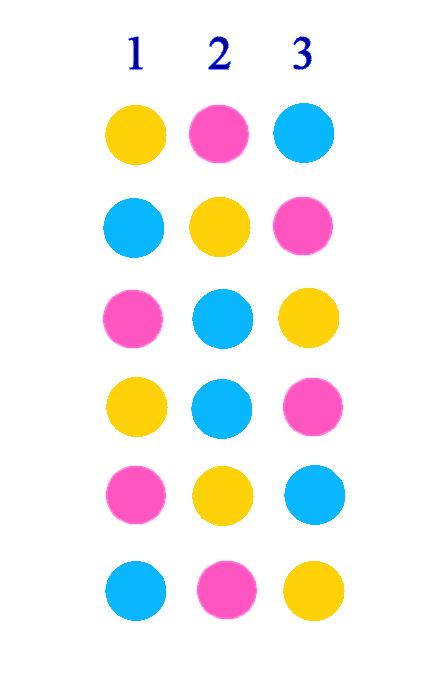Introduction
This is a question suitable for the
mainstream Junior College students taking H2 mathematics, but is some primary
school olympiad question from somewhere.
Whatever! Mathematics is for
everybody, young and old. Anybody can solve
this problem if s/he makes observations and
uses the right approach and thinking skills.
An Incisive Insight
Although this pentagon is not a regular
pentagon, the colouring scheme depends just on the order of colours on the
edges. We can start from one edge and
see what colours are possible. And then
we can rotate the colouring scheme around.
[ We are breaking down and simplifying the problem. ]
Fiddling around with various
possibilities, you might realise that:-
· you cannot have three of the same colour
going round the pentagon
· you cannot have three sets of pairs of edges
with the same colour.
· you cannot two single colours and one double
colour
There must be one single
colour and two pairs of doubled colours.
All colouring schemes will have a “12123”
colouring pattern going around in a loop. The diagram below shows an example where
colour 1 = yellow (Y), colour 2 = red (R)
and colour 3 = blue (B).
Do we need to consider a “21213” pattern?
If “12123”= “YRYRB”, we can later
reassign colours, swapping R and Y to give 1=R and 2=Y and then “12123”=“RYRYB”. So we have got that covered. Let us worry about the reassignment later.
Solution
Observe that the position of the “3” (the single colour) can be rotated
round the edges of the pentagon in 5 ways.
Observe also that there are 3! = 3 ´ 2 ´ 1 = 6 ways to shuffle the
colours i.e. assign colours 1, 2 and 3
to Y, R and B.
The above two processes (rotation
and shuffling) are independent of each other. Rotation of the single colour can be done with
or without the shuffling of colours. Hence
we can use the Multiplication Principle and calculate
the total number of ways = 5 ´ 6 = 30.
Tada!
H02. Use a diagram / model
H04. Look for pattern(s)
H09. Restate the problem in another
way
H10. Simplify the problem
H11. Solve part of the problem
H11. Solve part of the problem
Suitable Levels
* GCE ‘A’ Level H2 Mathematics
* IB Mathematics HL / SL
* Primary School Maths Olympiad
*
other syllabuses that include combinatorics




No comments:
Post a Comment
Note: Only a member of this blog may post a comment.